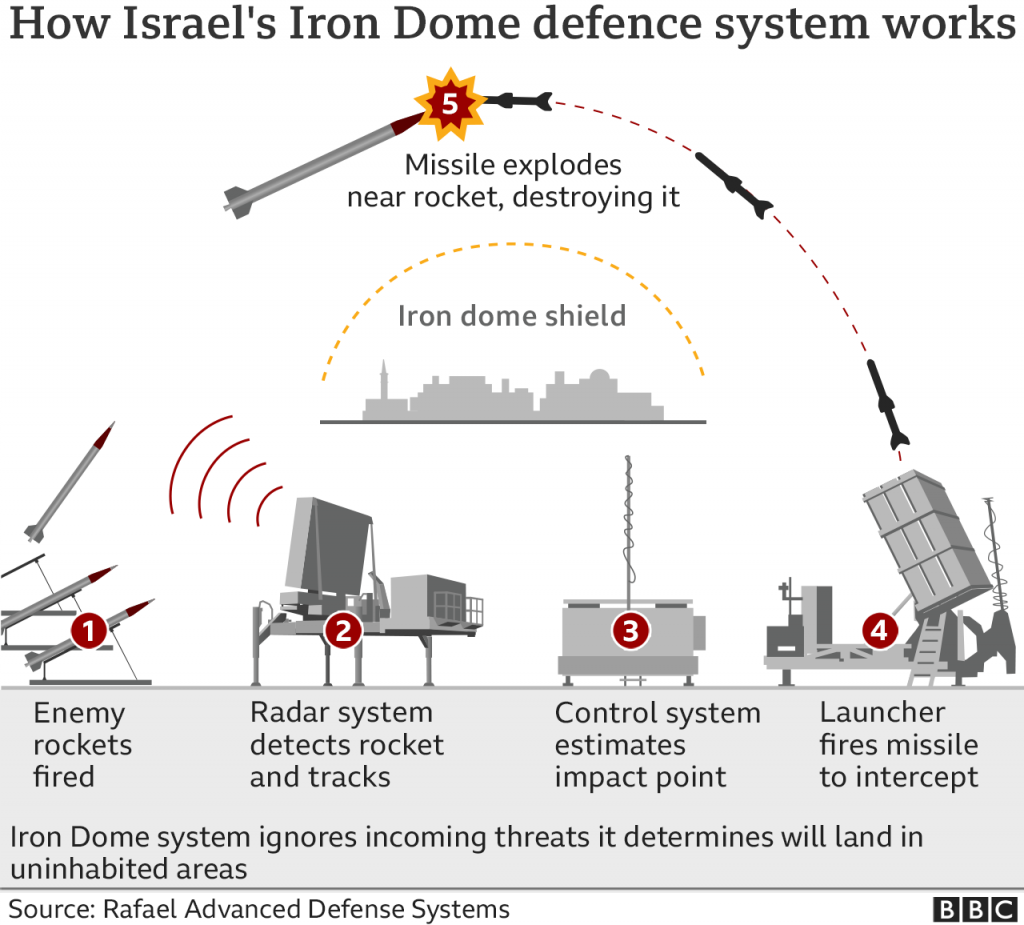Context:
- Israeli Iron Dome aerial defence system just intercepted a Hamas Unmanned Aerial Vehicle (UAV) that crossed from Gaza into Israel.
- Within a three-day span in early May 2021, Hamas had fired more than 1,500 rockets from Gaza all the way into Israel. The night sky over Israel had been ablaze with interceptor missiles from Iron Dome shooting down the incoming rockets in the sky.
Relevance:
GS-III: Science and Technology (Defence Technology)
Dimensions of the Article:
- What is Iron Dome?
- How does it work?
- What are the limitations of the system?
What is Iron Dome?
- Iron Dome is a multi-mission system capable of intercepting rockets, artillery, mortars and Precision Guided Munitions like very short-range air defence (V-SHORAD) systems as well as aircraft, helicopters and Unmanned Aerial Vehicles (UAV) over short ranges of up to 70 km.
- It is an all-weather system and can engage multiple targets simultaneously and can be deployed over land and sea.
- Iron Dome is jointly manufactured by Rafael Advanced Systems and has been in service with Israeli Air Force since 2011. Its development was prompted after a series of rocket attacks on Israel by Hezbollah and Hamas in the 2000s.
- Rafael claims a success rate of over 90%, with more than 2,000 interceptions, however experts agree the success rate is over 80%.
- It can protect deployed and manoeuvring forces, as well as the Forward Operating Base (FOB) and urban areas, against a wide range of indirect and aerial threats.
How does it work?
- An Iron Dome battery consists of a battle management control unit, a detection and tracking radar and a firing unit of three vertical launchers, with 20 interceptor missiles each.
- The interceptor missile uses a proximity fuse to detonate the target warhead in the air.
- The Iron Dome is deployed in a layered defence along with David’s Sling and Arrow missile defence system which are designed for medium- and long-range threats.
- One of the system’s important advantages is its ability to identify the anticipated point of impact of the threatening rocket, to calculate whether it will fall in a built-up area or not, and to decide on this basis whether or not to engage it. This prevents unnecessary interception of rockets that will fall in open areas and thus not cause damage.
- The I-DOME is the mobile variant with all components on a single truck and C-DOME is the naval version for deployment on ships.

What are the limitations of the system?
- The system has a ‘saturation point’. It is capable of engaging a certain (unpublished) number of targets at the same time, and no more.
- Additional rockets fired in a crowded salvo could succeed in breaching defences and cause damage.
- Several assessments suggest that Hamas is developing mitigating strategies including lowering the trajectories of the projectiles while also continuing to accumulate thousands of rockets with improved precision.
- One of the possible limitations is the system’s inability to cope with very short-range threats as estimates put the Iron Dome’s minimum interception range at 5-7 kilometres.
- According to a 2017 study, the system is built to intercept a certain of projectiles and can be overwhelmed by a more capable adversary.
- Among the threats mentioned were mortars, whose range usually does not exceed several kilometres.
-Source: The Hindu



